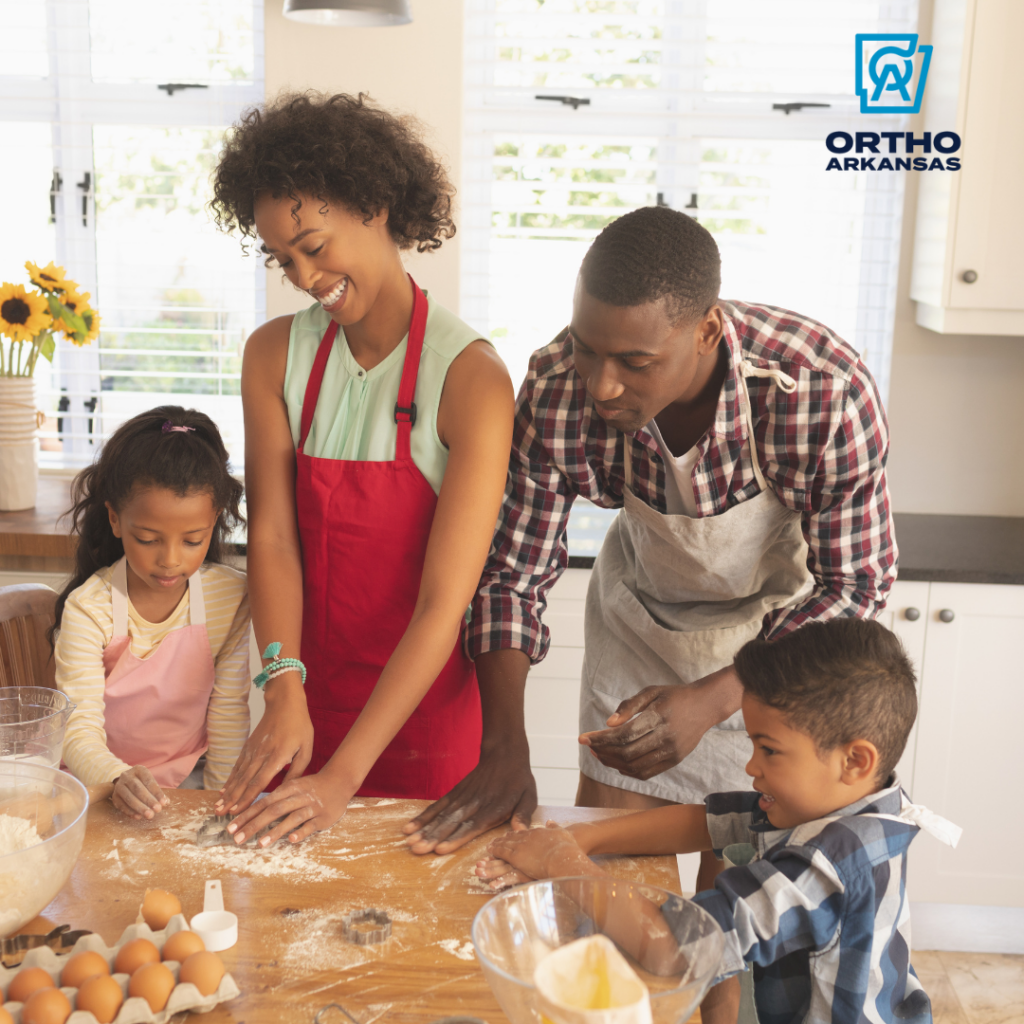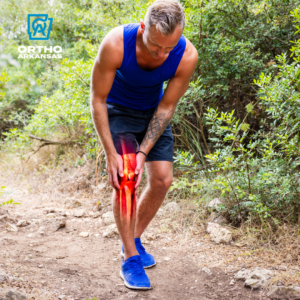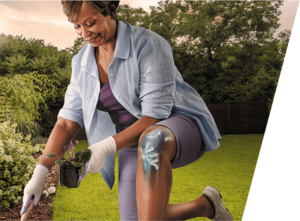Fall is the perfect time to break out your favorite recipes and fill your home with the comforting smells of freshly baked bread, pies, and other treats. While baking can be a fun and relaxing activity, it’s important to remember that the kitchen is also a place where injuries can happen—especially orthopedic injuries. At OrthoArkansas, we want to ensure your baking adventures are both safe and enjoyable, without any mishaps that could lead to joint or bone problems.
Here’s how you can stay safe while whipping up those delicious fall treats and avoid common kitchen-related injuries.
Proper Lifting Techniques: Protect Your Back and Shoulders
From lifting heavy bags of flour to reaching for that mixer on the top shelf, baking often involves lifting and moving around bulky or heavy items. To avoid straining your back or shoulders, always lift with your legs—not your back. Bend at your knees and use your leg muscles to help you lift, keeping the item close to your body.
If you need to reach for something high up, use a sturdy step stool instead of stretching too far and risking shoulder strain or a fall.
Prevent Hand & Wrist Injuries: Watch Your Form
Baking often requires repetitive motions, such as kneading dough, whisking ingredients, or rolling out pastry. These actions, when done for extended periods without proper technique, can lead to overuse injuries, especially in your wrists and hands.
Here are a few tips to protect your hands:
• Use ergonomic kitchen tools with comfortable grips to minimize strain.
• Take regular breaks during repetitive tasks to avoid muscle fatigue.
• If you feel any discomfort or strain while kneading or mixing, switch to using a stand mixer or hand mixer to take the load off your wrists.
By using good form and taking breaks, you can reduce the risk of developing tendinitis or carpal tunnel syndrome, common conditions we treat at OrthoArkansas.
Avoid Slips and Falls: Kitchen Floors Can Be Tricky
With spills and ingredients scattered on the floor, it’s easy to have an accidental slip or fall in the kitchen. Injuries from falls can range from sprained ankles to more severe fractures. To prevent this, clean up spills as soon as they happen and keep your kitchen floor dry and clutter-free.
Additionally, wear comfortable shoes with non-slip soles while baking. Slippers and socks might seem cozy, but they won’t offer the grip you need to stay steady on your feet.
Take Breaks: Avoid Overloading Your Knees and Feet
Baking can take hours, and standing for long periods in the kitchen can put strain on your knees, hips, and feet. If you’re prone to joint pain, especially in the lower extremities, it’s important to take breaks and avoid standing in one position for too long.
Here are some simple ways to reduce the strain:
• Use anti-fatigue mats in front of your workstations to reduce pressure on your joints.
• Take short breaks every 30 minutes to stretch and move around.
• Sit down for tasks that don’t require standing, such as peeling or chopping ingredients.
This will help prevent overuse injuries in your knees and hips, making your baking experience much more enjoyable.
Keep Your Hands Safe from Cuts and Burns
Using sharp knives and handling hot pans are part of any baking process, but both can lead to hand and wrist injuries. To avoid cuts, always use sharp knives with proper technique and be sure to cut away from your body. When handling hot pans or trays, use oven mitts or heat-resistant gloves to protect your hands and wrists from burns.
A common injury we see at OrthoArkansas is tendon damage or even fractures from cuts in the kitchen. Taking these simple precautions can help you avoid an unexpected trip to the clinic.
Don’t Forget to Stretch: Baking Can Be a Workout
It may not seem like it, but baking can involve a lot of physical activity. You’re bending, reaching, lifting, and using your hands and arms continuously. To keep your muscles and joints in good condition, try stretching before you start a long baking session.
Focus on gentle stretches for your hands, wrists, shoulders, and back:
• Hand and wrist stretch: Extend one arm out in front of you with your palm facing down. Gently pull your fingers back with your other hand to stretch the wrist and forearm.
• Back and shoulder stretch: Stand with your feet shoulder-width apart and gently twist from side to side, holding each side for 10-15 seconds.
• Leg stretches: To stretch your legs and hips, try doing a few simple lunges to loosen up your muscles.
These stretches will help reduce stiffness and prevent any soreness after a long day of baking.
OrthoArkansas: Your Kitchen Injury Prevention Partner
Baking should be an enjoyable activity, not one that leads to unnecessary injury. At OrthoArkansas, we are committed to helping you maintain your orthopedic health, whether you’re in the kitchen, at work, or out and about. By following these safety tips, you can keep your joints, muscles, and bones safe while you bake your favorite fall treats.
If you experience any pain or discomfort while cooking or doing everyday activities, don’t hesitate to reach out to us. From preventive care to surgical solutions, we offer a full range of orthopedic services designed to keep you pain-free and active.
Have a Safe and Injury-Free Baking Season!
This fall, bake your heart out while staying safe and injury-free. If you need any assistance with joint pain, hand or wrist issues, or any other orthopedic concerns, OrthoArkansas is here to help. Schedule an appointment with us today, and let’s make sure your baking season is both delicious and safe!
Enjoy the fall season in the kitchen, but don’t let an orthopedic injury take you out of the fun. From all of us at OrthoArkansas, happy baking!














